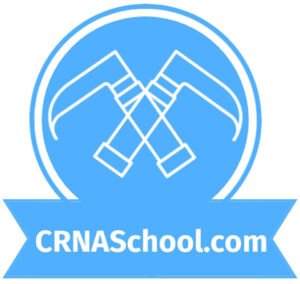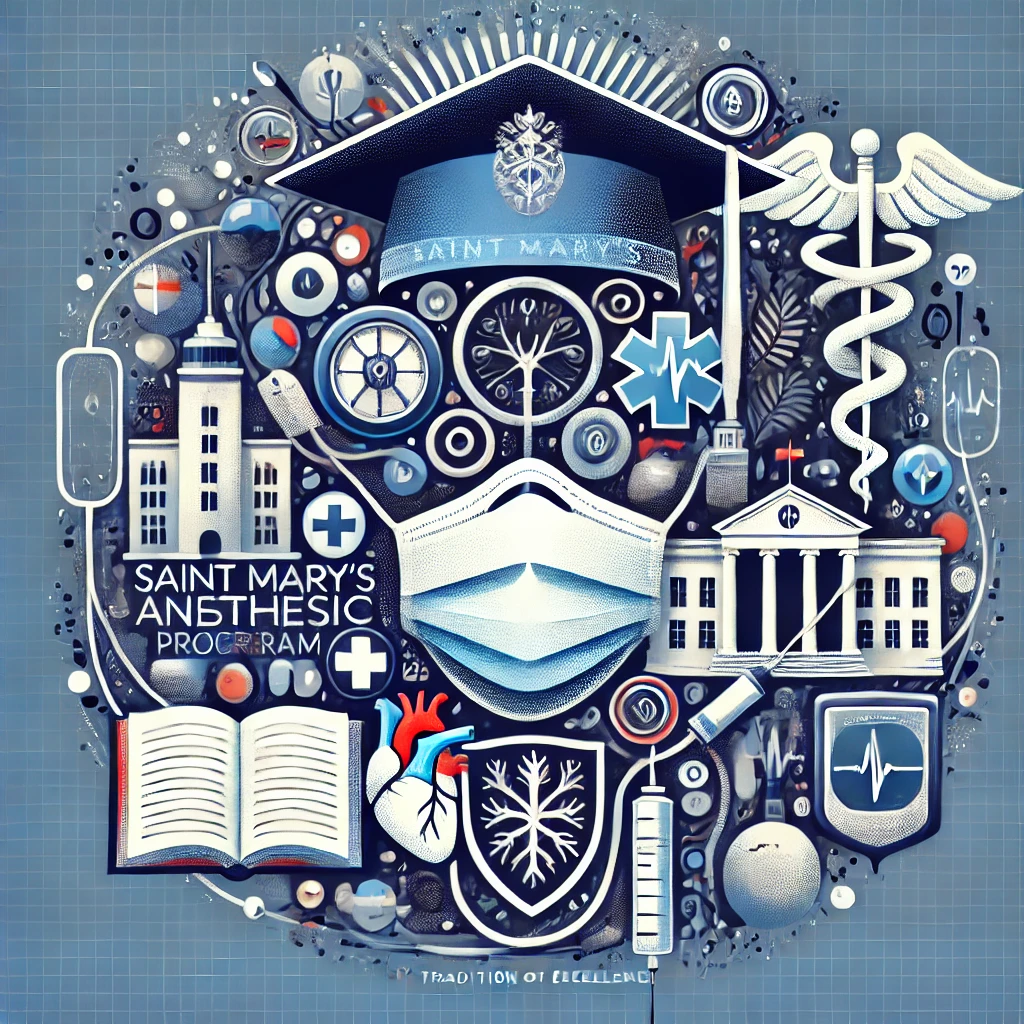Saint Marys CRNA Program: Top Anesthesia Education
Choosing a career in anesthesia is more than a job; it’s a calling.
It’s about passion, dedication, and wanting to help others. At Saint Mary’s CRNA School inMinnesota, you’ll find a top-notch program that prepares its graduates to succeed as Anesthesia Providers.
This program mixes tough academics with real-world clinical experience.
Imagine learning in a place where everyone supports your growth. You’ll start your path to becoming a Certified Registered Nurse Anesthetist here. You’ll learn important skills and become a leader in healthcare.
Key Takeaways
- Saint Marys CRNA School is one of four CRNA schools in Minnesota.
- The program is a 36-months
- Each class averages 35 students
- Graduates have a 100% employment rate within six months of graduation.
- Early clinical exposure starts within the first year of the program.
Important Dates and Imformation
| Program Length | 36 Months |
| Application Deadline | September 15th |
| Degree Offered | DNP |
| Class Size | Average 35 |
| Cost | $88,580 |
| Contact | Leah Gordon, DNP, APRN, CRNA, Program Director (612) 728-5151 email: lgordon@smumn.edu |
| Website | Saint Marys CRNA School |
| School Location | 2500 Park Avenue Minneapolis, MN 55404 |
Overview of Saint Marys CRNA School
The Saint Marys CRNA School provides a unique path to a Doctor of Nursing Practice. It’s a full-time, 36-month program designed for nursing professionals. The goal is to specialize in anesthesia.
The curriculum focuses on both clinical training and leadership. This is key for success in CRNA education.
Introduction to the Doctor of Nursing Practice (DNP) Program
The Doctor of Nursing Practice program at Saint Marys covers important topics. These include epidemiology, pharmacology, and healthcare policies. It prepares students for the role of Certified Registered Nurse Anesthetists (CRNAs).
Students will get rigorous training. This training helps develop critical thinking and practical skills for anesthesia care.
Full-Time and Curriculum Structure
The program is full-time, offering a rich learning environment. It combines classroom learning with practical clinical experiences. Key features of the anesthesia curriculum include:
- Two remote synchronous meetings via Zoom to enhance student engagement.
- Self-paced chemistry modules that foster connections with instructors.
- Hands-on learning through rotations at diverse clinical sites including well-regarded hospitals in Minneapolis, St. Paul, Duluth, and Marshfield.
Also, the curriculum includes various recommended certifications. These include CCRN and ACLS. They improve candidates’ qualifications without needing GRE scores for application. The program, started in 1984, has a high standard. In 2012, the National Certification Exam first-time passing rate was 96.6%.
| Curriculum Component | Description |
|---|---|
| Remote Meetings | Two synchronous Zoom meetings in Week 2 and Week 15. |
| Chemistry Modules | Self-paced learning with various assessment opportunities. |
| Clinical Rotations | Experience in multiple hospitals across different cities. |
| Application Process | Submission of official transcripts, a professional resume, and completion of an application questionnaire. |
The Doctor of Nursing Practice program at Saint Marys CRNA School is comprehensive. It prepares nurse anesthetists to handle the challenges of modern healthcare.
The Importance of Clinical Rotations in CRNA Education
Clinical rotations are key in shaping nurse anesthesia students at Saint Marys CRNA School. Students get hands-on experience at many places. This prepares them well for their future careers.
Hands-On Experience at Numerous Clinical Sites
Students in the CRNA program get a lot of hands-on experience. They work at over 35 clinical sites, from community hospitals to big urban medical centers. This lets them try out different anesthesia techniques and work with various patients.
They also face complex scenarios. This prepares them for the challenges they’ll meet as CRNAs. They work an average of 32 to 40 hours a week. This is more than the standards require, ensuring they get a thorough education.
Supervision by Experienced Faculty
Students are supervised by experienced faculty, like CRNAs and anesthesiologists. This mentorship is vital for learning the skills needed for board certification. It helps students get the guidance and feedback they need.
This makes their learning experience better. It prepares them for successful careers in anesthesia.
Saint Marys CRNA School: Admission Requirements
The Saint Marys CRNA School has a strict admission process. It aims to find the best candidates. Knowing what’s needed helps students prepare well.
Eligibility Criteria for Prospective Students
To get into the Doctor of Nursing Practice (DNP) program, you need to meet certain requirements:
- You must have a Bachelor of Science in Nursing (BSN) degree from an accredited school.
- You should have a current and clear Registered Nurse (RN) license.
- You must have taken a statistics course in college; this is required for all applicants.
- Keep a GPA of 3.0 or higher for the best chance of getting in.
- You need to submit three letters of recommendation, with one from a teacher.
If it’s been more than seven years since you took statistics, consider a refresher course. Also, if you have a nursing master’s degree, you might be able to transfer up to 50% of your credits.
Application Timeline and Process
The application goes through NursingCAS. You’ll need to submit your application and documents there. Important dates include:
| Application Milestone | Date |
|---|---|
| Fall term applications open | September 1 |
| Priority application deadline | March 15 |
| Applications due for summer enrollment | August 1 |
Saint Marys College doesn’t accept applications from certain states. These include Alabama, Georgia, Louisiana, Massachusetts, New York, North Carolina, and Tennessee. Start preparing early to make sure you have everything ready. This increases your chances of getting into this prestigious program.

Cost of Education at Saint Marys CRNA School
Prospective students need to know the cost of education at Saint Marys CRNA School. The school offers a top-notch nurse anesthesia program. Tuition rates show the program’s quality and challenge. Students should also budget for extra fees for clinical rotations and materials.
Tuition Overview
Saint Mary’s University of Minnesota’s CRNA program offers a highly regarded nurse anesthesia education, and tuition reflects the comprehensive nature of the training.
For the full duration of the 3-year Doctor of Nursing Practice (DNP) in Nurse Anesthesia program, tuition is $1,030 per credit.
This includes costs for clinical training, course materials, and lab fees.
Additional expenses like books, housing, and health insurance may also apply. Financial aid options such as federal loans, scholarships, and payment plans are available to assist students in managing tuition costs.
It’s recommended to check the university’s latest tuition updates for the most accurate figures.
Financial Aid and Scholarships Available
There are many financial aid options to help with costs. Scholarships for Anesthesia students are available. Students should look into all these options to manage their expenses well.
The total cost mentioned doesn’t include living expenses like housing and travel. Creating a detailed budget can help students plan their finances better.

Living in Rochester, Minnesota: A Student’s Perspective
Rochester, Minnesota, is a great place for students at Saint Marys CRNA School.
It offers a mix of learning and lifestyle that’s perfect for future nurse anesthetists. The city’s connection to the Mayo Clinic boosts learning and career chances. Plus, it’s easy to find quality healthcare.
The cost of living here is moderate, and there are many community resources. These resources meet different needs, making life in Rochester appealing.
Quality of Life and Community Resources
Rochester welcomes students with open arms. The community offers many resources to help students succeed. Key features include:
- Affordable housing options
- Public transportation services
- Health and wellness facilities, including gyms and clinics
- Libraries and study spaces to foster academic success
These resources help students balance school and life.
Cultural and Recreational Opportunities
Rochester is full of cultural activities that go beyond school. The city’s arts scene is lively, offering:
- Theater productions featuring local talent
- Live music performances across various genres
- Local festivals that celebrate arts, food, and culture
- Parks and recreational areas for outdoor enthusiasts
These activities let students relax and connect with the community. Rochester, Minnesota, is a top choice for Saint Marys CRNA School students.
| Community Resource | Benefits |
|---|---|
| Public Library | Access to study materials, technology, and community events |
| Fitness Centers | Promotes health and wellness for students |
| Local Theaters | Cultural enrichment through plays, concerts, and performances |
| Parks | Outdoor activities for relaxation and recreation |
Conclusion
The Saint Marys CRNA School is a top choice for those wanting to become nurse anesthetists. It offers a Doctor of Nursing Practice program with Mayo Clinic ties.
This program gives students the hands-on training needed for the real world of anesthesia.
Being in Rochester, Minnesota, means students have access to a lively community. This community is full of resources for both learning and personal growth.
The school’s tuition is fair, reflecting the quality of its education. Students should keep an eye on application deadlines, as classes start in the fall.
Minnesota has a great job market for CRNAs, ranking #7 in the nation. After finishing their training, graduates can look forward to good job prospects. The average CRNA salary in Minnesota is $198,750. This shows the value of their education and the potential for a fulfilling career.
FAQ
What makes the Saint Marys CRNA School’s nurse anesthesia program unique?
The Saint Marys CRNA School’s program is special. It combines the Mayo Clinic’s expertise with a rigorous curriculum. Students get hands-on experience at over 35 clinical sites.
What is the duration and structure of the Doctor of Nursing Practice (DNP) program?
The DNP program is a full-time, 36-month course. It’s for nurses who want to specialize in anesthesia. The program covers important topics like epidemiology and pharmacology.
How do clinical rotations contribute to CRNA education?
Clinical rotations are key at Saint Marys CRNA School. They give students real-world experience. They work under the guidance of experts in the field.
What are the admission requirements for the Saint Marys CRNA School?
Getting into the program is competitive. You need a nursing bachelor’s degree and RN license. Applications are due by August 1 for the next summer.
What should I expect regarding tuition and financial aid at Saint Marys CRNA School?
Tuition at Saint Marys CRNA School is high-quality. You’ll also need to budget for clinical and course materials. There are scholarships and financial aid options available.
How is life as a student in Rochester, Minnesota?
Rochester, Minnesota, is a great place to study. It has a strong healthcare system and a good quality of life. The cost of living is moderate, and there’s plenty to do.
Are there anesthesia Schools mear Minnesota?
If you are looking for Anesthesia Schools outside of Minnesota, you are in luck. Their are many schools outside the state and the best place to find all of them is a CRNA Schools by State
What is a CRNA
A CRNA is someone who is a Nurse who gives anesthesia in a variety of settings. To find out more visit What is a CRNA.

